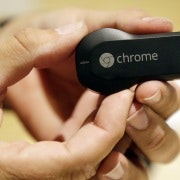Nokia's smartphone resurrection
Nokia has launched its first devices running the Windows Phone software after signing a landmark deal with Microsoft in February. Having replaced its own Symbian platform with Microsoft's, this is essentially a restart for the handset manufacturer, which has struggled to adjust to the new dynamics of the smartphone market following the launch of the iPhone in 2007. With Microsoft's new mobile platform yet to take off and Nokia banking on Windows Phone as its primary smartphone platform, the success of the devices will be critical to the future of both companies. Both companies therefore have much riding on the outcome of this launch.
The devices will launch initially in Western Europe in November, and Nokia is putting off the larger challenge of the North American market until 2012. With a choice of premium and affordable devices and a range of differentiated services, coupled with marketing and retail support, Ovum believes this is the best shot for Nokia to re-launch itself and the Windows Phone platform. The only question that now remains is whether it is enough to convince buyers to shun Androids and iPhones, or whether Nokia has missed the boat.
Two devices address both premium and low end of smartphone market
Nokia has chosen to launch two Windows Phone devices: the premium Lumia 800 and the lower priced Lumia 710. Both devices feature a Qualcomm MSM 8255 single-core chipset clocked at 1.4GHz, though the Lumia 800 benefits from a 3.7-inch AMOLED “Clear Black” screen, an improved 8-megapixel camera, and a polycarbonate body. Those who were fortunate enough to see a Nokia N9 will quickly recognise the Lumia 800, as it uses the same chassis as the N9, with the addition of the Windows Phone specification shutter release button and three navigation keys. In addition to a cheaper LCD display and 5-megapixel camera, the Lumia 710 also has changeable back covers. While this may seem to be harping back to the Nokia 3310 and Nokia's glory days, changeable covers still remain a popular way of customising devices for operators and users alike, as Vodafone has recently discovered with the Vodafone Smart.
Nokia is using existing assets to differentiate devices
Considering that Nokia had very little (if no) input into the Mango release of Windows Phone, the company has done well to differentiate its devices against those from other Windows Phones licensees. Nokia has included its Nokia Maps, which provides free offline navigation on both devices. Additionally, Nokia has brought its experience in imaging with an f2.2 Carl Zeiss camera which features touch to focus, a function that is unique to Nokia's Windows Phone devices. Nokia has also brought another of its assets, Nokia Music, to help differentiate the devices. In addition to offering access to its music catalogue in 38 countries, Nokia will also provide free access to a Pandora-like radio streaming service that uses the Nokia Music catalog. While none of these on their own are standout features, they at least provide Nokia with some ammunition for its marketing and sales team to market the devices in an increasingly competitive market.
Nokia's strengths in marketing and retail will address shortcomings of Windows Phone launch
The challenges that Nokia faces are significant – many potential Windows Phone customers will have already bought an Android or iPhone and will have some form of attachment to those platforms. They will have invested in the platforms from a services, financial (via applications), and familiarity perspective, and as such Nokia will have a challenge to convince them to switch to what is a largely unknown, and therefore risky, alternative. For consumers, they will need to have a clear and simple answer to the question “Why should I buy this instead of an iPhone or Android?”
The poor marketing and sales support for the launch of Windows Phone played a large part in the platform's disappointing sales to date. Microsoft's centralised control of marketing and budget for the launch meant that it was focused on the platform, rather than the actual devices and sales channels. This meant that consumers had very little awareness of the products, which were not promoted by sales outlets. The fact that Microsoft has now entrusted the marketing and sales of the devices to its OEM partners, combined with Nokia's significant strength in these areas, means we anticipate these issues to be largely overcome.
Nokia has put the focus of its marketing of the new products very much on itself, rather than Microsoft or Windows Phone. Ovum thinks this is a wise move as the Nokia brand, while slightly damaged, is much stronger than Microsoft or Windows in the consumer and mobile space. The Xbox brand has very little association with Microsoft or Windows, which has worked to its advantage.
Focus on Western Europe means no North American launch until 2012
The devices will be launched in Western Europe in early November, with other regions to follow later. The wholesale price of the Lumia 800 will be €400, meaning that it will be able to compete successfully with the iPhone and top Android devices, at least from a price perspective.
Neither phone will be launched in North America until early 2012, meaning that the company will miss the important holiday season. Given the relative strength of Nokia in the Western European market versus North America, it arguably makes sense to focus its efforts in Western Europe. However, by delaying its launch in North America, it certainly will not make the job any easier when it does come to launch – it will essentially be going from a standing start against competitors that will have had a three-year head start.
Nick Dillon is an Analyst in Ovum's Devices and Platforms team.















